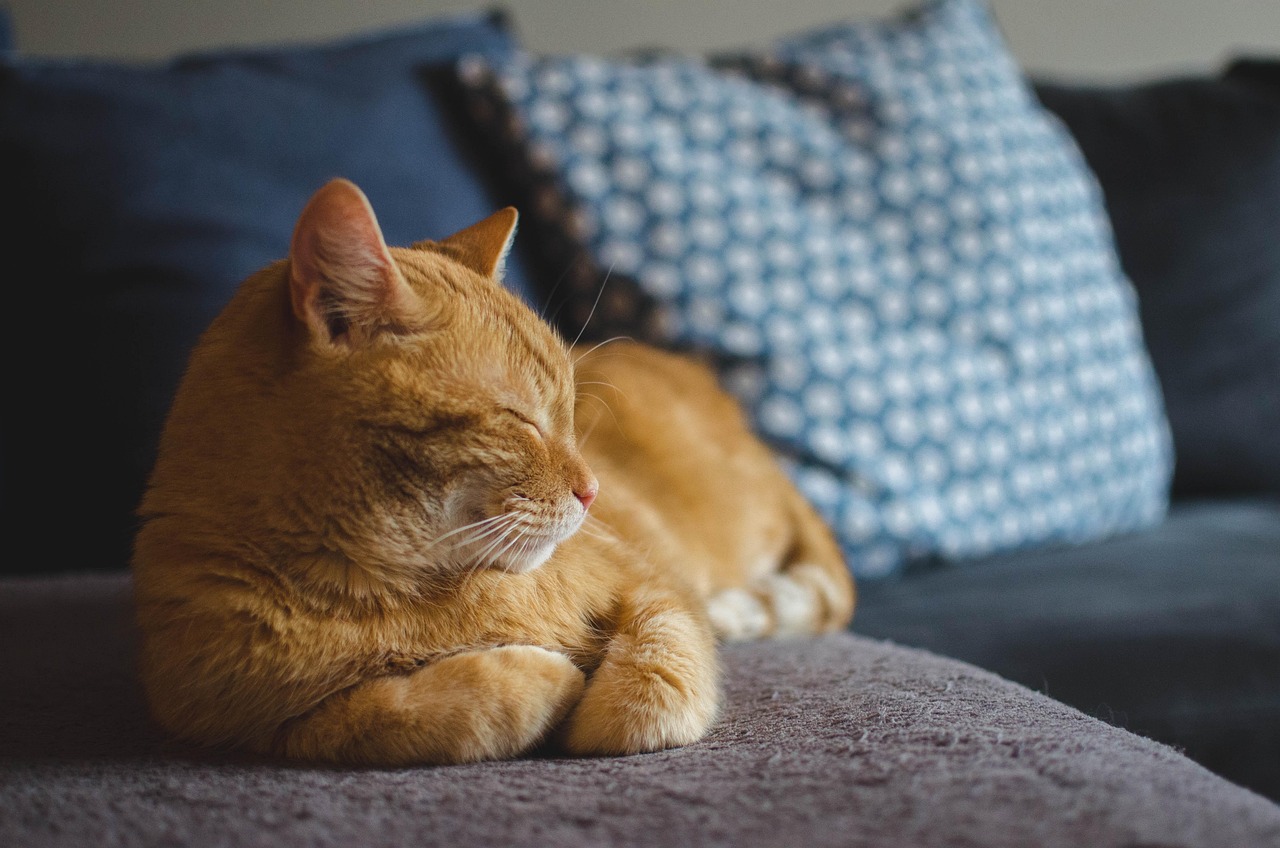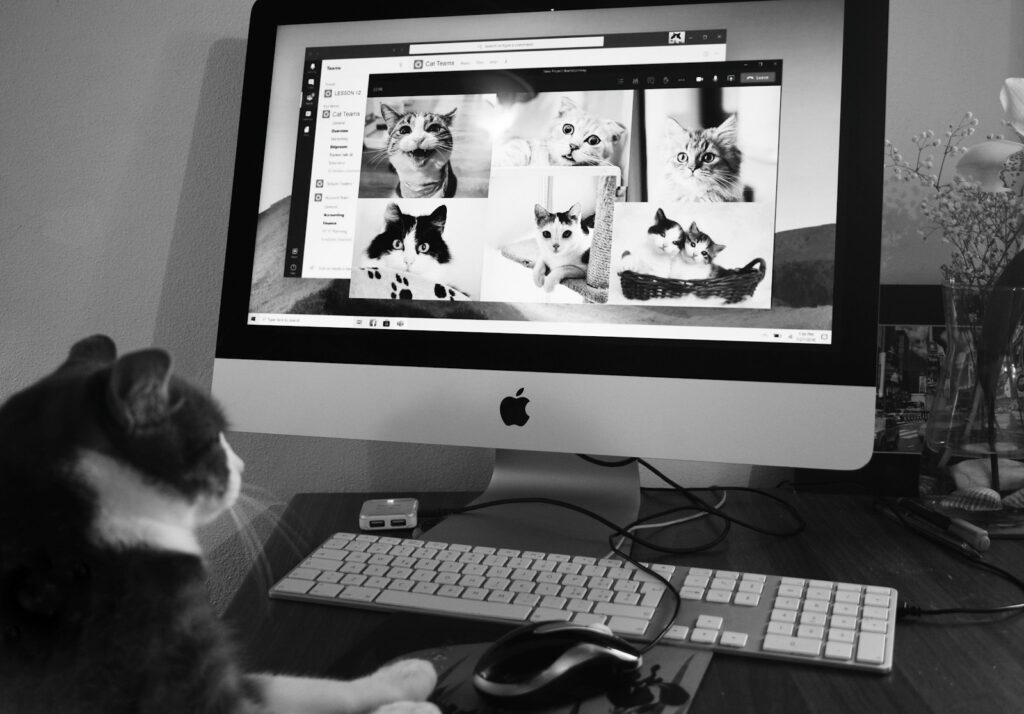Have you ever wondered, “how old is my cat?” Whether you’ve adopted a stray, rescued a feline from a shelter, or simply want to better understand your pet’s life stage, determining your cat’s age can feel like solving a mystery. Unlike dogs, cats don’t come with easily readable age markers, and their exact age isn’t always documented.
Understanding your cat’s age is more than just satisfying curiosity. It helps you provide appropriate care, nutrition, and medical attention throughout their life stages. A young kitten has vastly different needs than a senior cat, and knowing where your feline friend falls on the age spectrum can help you make informed decisions about their health and wellbeing.
This comprehensive guide will walk you through the various methods to determine your cat’s age, from physical indicators to behavioral clues. We’ll also explore how many cat years vs human years, discuss the different life stages cats experience, and provide tips for caring for cats at every age.
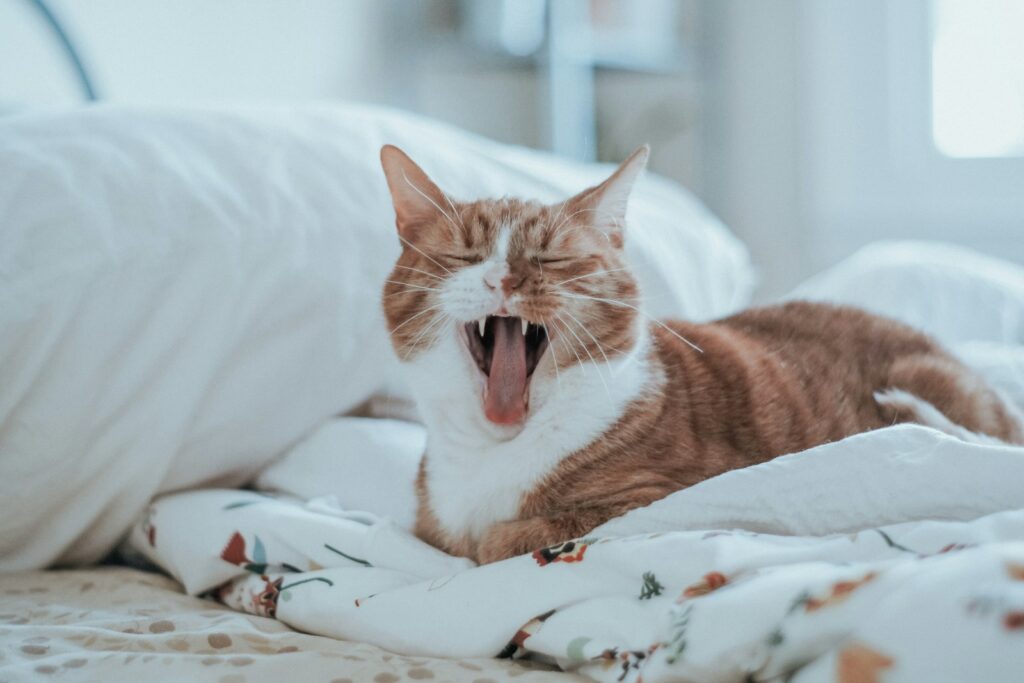
Understanding Cat Life Stages
Before diving into age determination methods, it’s helpful to understand the different life stages cats experience. Unlike the simplified “seven cat years equal one human year” rule, cats actually age differently throughout their lives.
Kitten Stage (0-6 months)
Young kittens grow rapidly during their first six months. They’re born with baby teeth that begin falling out around 3-4 months, replaced by adult teeth. During this stage, kittens are highly energetic, playful, and learning essential social skills.
Young Adult Stage (6 months – 2 years)
This period marks sexual maturity and continued growth. Cats typically reach their full adult size by 12-18 months, though some larger breeds like Maine Coons may continue growing until age 3-4 years.
Adult Stage (2-7 years)
Adult cats are in their prime years. They’re typically healthy, active, and have established their personality and routines. This is often the most stable period of a cat’s life.
Senior Stage (7-11 years)
Senior cats may begin showing subtle signs of aging, though many remain quite active. Regular veterinary checkups become increasingly important during this stage.
Geriatric Stage (11+ years)
Older cats often experience age-related health issues and may require special care, modified diets, and more frequent veterinary visits.
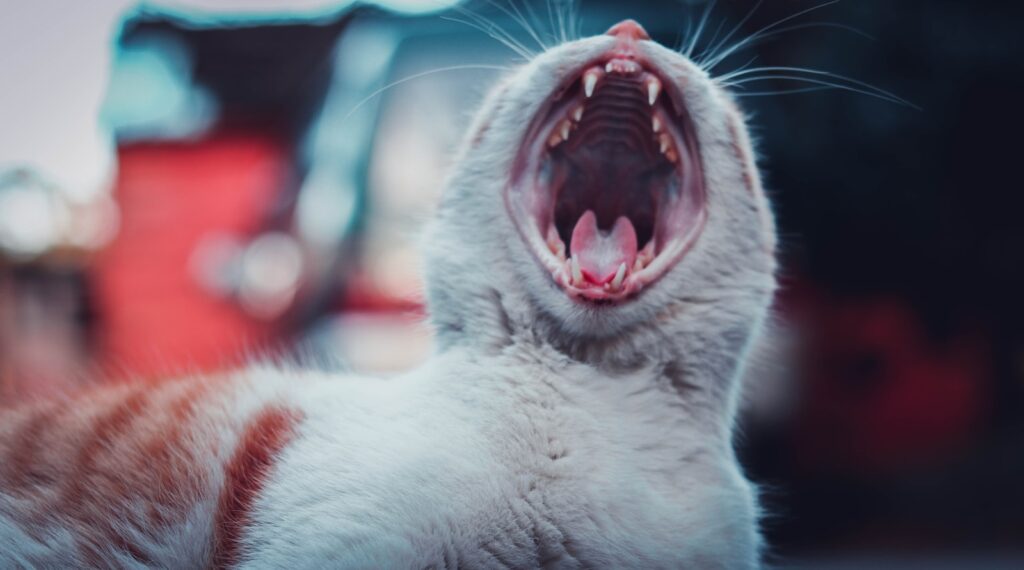
Physical Indicators of Your Cat’s Age
Examining Your Cat’s Teeth
A cat’s teeth provide some of the most reliable clues about their age. Here’s what to look for:
Young Kittens (0-6 months):
- Baby teeth are small, sharp, and bright white
- All baby teeth should be present by 6 weeks
- Teeth begin falling out around 3-4 months
Young Adults (6 months – 2 years):
- Adult teeth are fully developed and bright white
- All 30 adult teeth should be present
- No visible wear on tooth tips
Adults (2-7 years):
- Slight yellowing may begin to appear
- Minor wear on tooth tips might be visible
- Teeth remain generally healthy
Senior Cats (7+ years):
- More noticeable yellowing of teeth
- Increased wear on tooth surfaces
- Possible tartar buildup
- Some missing teeth may indicate advanced age
Evaluating Your Cat’s Eyes
The eyes can reveal important age-related changes:
Young Cats:
- Bright, clear eyes with no cloudiness
- Sharp, focused gaze
- Minimal tearing or discharge
Middle-aged Cats:
- Eyes remain generally clear
- May develop slight changes in iris color
Senior Cats:
- Nuclear sclerosis (slight cloudiness) may appear
- Pupils may respond more slowly to light
- Increased tearing or discharge
- Possible changes in vision
Assessing Muscle Tone and Body Condition
A cat’s physical condition changes significantly with age:
Young Cats:
- Well-defined muscle tone
- Sleek, firm body
- High energy levels
- Excellent mobility
Adult Cats:
- Maintained muscle mass
- Stable weight
- Good mobility
- Moderate to high energy
Senior Cats:
- Some muscle loss may be evident
- Possible weight changes (gain or loss)
- Decreased mobility
- Lower energy levels
- May develop extra skin around shoulder blades
Examining Your Cat’s Coat
Fur quality and appearance change throughout a cat’s life:
Young Cats:
- Soft, fine, lustrous coat
- Consistent color
- Minimal matting issues
Adult Cats:
- Full, healthy coat
- Maintained color and texture
- Regular grooming habits
Senior Cats:
- Possible dulling of coat color
- Gray or white hairs may appear
- Coarser texture
- Potential matting due to reduced grooming
- Thinner fur in some areas
Behavioral Clues to Age
Activity and Energy Levels
Young Kittens:
- Extremely playful and energetic
- Sleep frequently but play intensely when awake
- Curious about everything
Young Adult Cats:
- High energy and playfulness
- Excellent hunting instincts
- Active exploration
Adults:
- Moderate, consistent energy
- Established play preferences
- Balanced activity patterns
Senior Cats:
- Reduced activity levels
- Preference for quiet activities
- More sleeping throughout the day
Social Behavior Changes
Age affects how cats interact with humans and other animals:
Young Cats:
- Generally more social and adaptable
- Eager to play and interact
- Quick to form bonds
Older Cats:
- May become more independent
- Possible increased vocalization
- Changes in litter box habits
- Potential cognitive changes
Converting Cat Years to Human Years
The traditional “multiply by seven” rule is overly simplistic. Here’s a more accurate conversion:
First Two Years:
- 1 cat year = approximately 15 human years
- 2 cat years = approximately 24 human years
After Age 2:
- Each additional cat year = approximately 4 human years
Example Calculation:
- 5-year-old cat = 24 (first two years) + 12 (3 additional years × 4) = 36 human years
- 10-year-old cat = 24 + 32 (8 additional years × 4) = 56 human years
Factors Affecting Cat Aging
Indoor vs. Outdoor Cats
The lifestyle your cat leads significantly impacts their aging process:
Indoor Cats:
- Typically live longer (12-18 years average)
- Protected from predators, diseases, and accidents
- More consistent veterinary care
- Better nutrition and regular feeding
Outdoor Cats:
- Generally shorter lifespan (2-5 years average)
- Exposed to more health risks
- Higher stress levels
- Unpredictable nutrition
Breed Differences
Some cat breeds have different life expectancies:
Longer-lived Breeds:
- Siamese (15-20 years)
- Persian (12-17 years)
- Maine Coon (13-14 years)
Shorter-lived Breeds:
- Some purebreds may have genetic predispositions
- Mixed breeds often have fewer inherited health issues
Nutrition and Healthcare
Proper nutrition and regular veterinary care can significantly impact aging:
- High-quality cat food appropriate for life stage
- Regular dental care
- Preventive veterinary visits
- Prompt treatment of health issues
- Maintaining healthy weight
Using a Cat Age Calculator Or Cat Age Chart
While physical examination provides the most accurate assessment, cat age calculators can offer rough estimates. These tools typically consider:
- Physical appearance markers
- Behavioral characteristics
- Health status
- Lifestyle factors
Remember that these calculators provide estimates rather than definitive answers. Your veterinarian can provide the most accurate assessment.
Health Considerations for Different Ages
Kitten Care (0-1 year)
- Vaccinations and spaying/neutering
- Proper nutrition for growth
- Socialization opportunities
- Parasite prevention
Adult Cat Care (1-7 years)
- Annual veterinary checkups
- Dental care maintenance
- Weight management
- Enrichment activities
Senior Cat Care (7+ years)
- Biannual veterinary visits
- Modified diet for aging needs
- Joint health support
- Monitoring for age-related conditions
When to Consult Your Veterinarian
Professional assessment is recommended when:
- You’re unsure about your cat’s age
- Your cat shows sudden behavioral changes
- You notice health issues that might be age-related
- You want to establish an appropriate care plan
- Your cat has missing teeth or other dental issues
- You observe changes in mobility or energy levels
Caring for Cats in Their Golden Years
As cats enter their senior years, their needs change significantly:
Environmental Modifications
- Provide easy access to food, water, and litter boxes
- Offer comfortable, warm sleeping areas
- Ensure good lighting throughout the home
- Consider ramps or steps for high surfaces
Dietary Adjustments
- Senior cat food formulated for older cats
- Easily digestible proteins
- Balanced nutrition for aging metabolism
- Adequate hydration support
Health Monitoring
- Watch for signs of arthritis or mobility issues
- Monitor eating and drinking habits
- Note changes in litter box usage
- Observe sleeping patterns and behavior
Comfort Measures
- Soft bedding for joint comfort
- Gentle grooming assistance if needed
- Maintaining routine and familiar environment
- Providing mental stimulation appropriate for energy levels
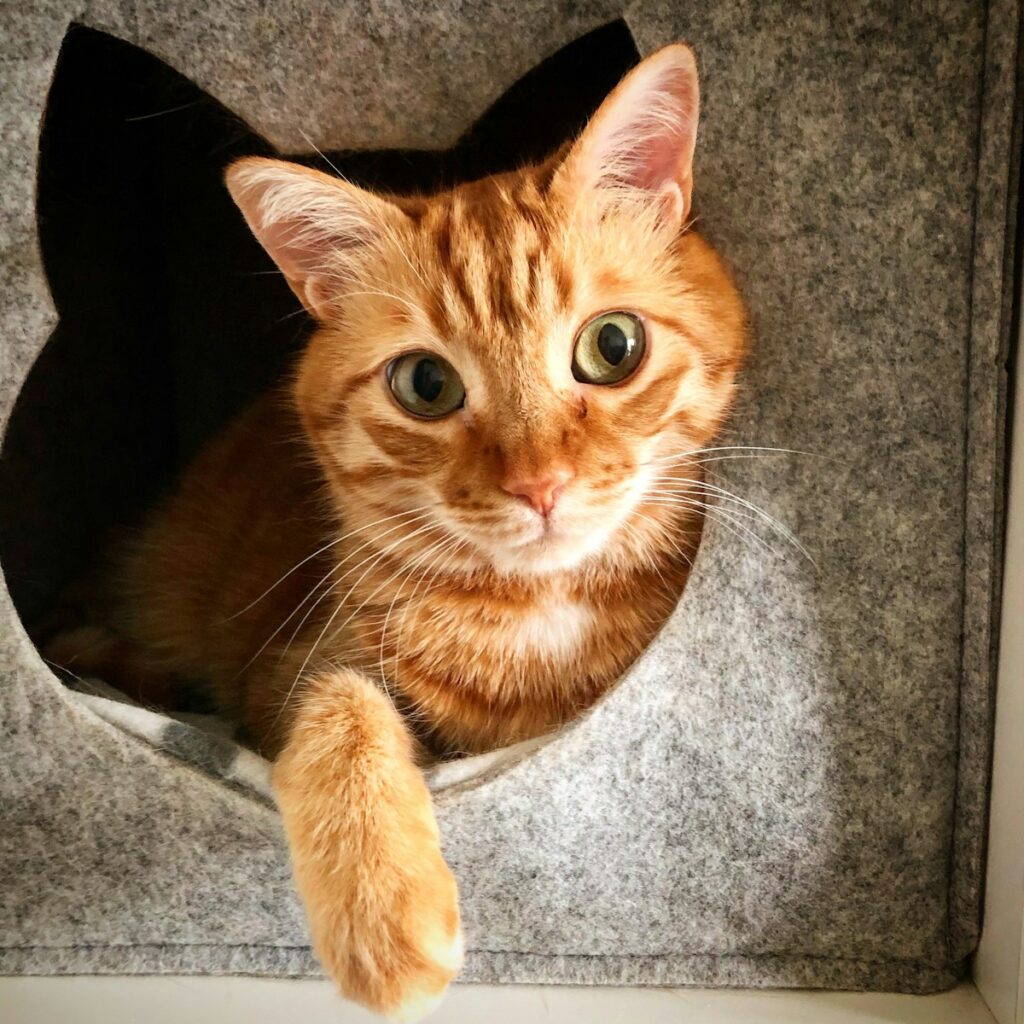
Helpful Links and Resources on Cat Ages
Here is a list of helpful resources to learn more about determining your cat’s age, understanding their life stages, and providing proper care:
Explore a range of articles and tips on cat health, including age-related care recommendations.
American Association of Feline Practitioners (AAFP)
Access guidelines and resources dedicated to feline health and wellness across all life stages.
Use this tool to determine your cat’s age in human years and better understand their stage of life.
A trusted resource offering advice on cat behavior, aging, health, and nutrition.
Cornell University Feline Health Center
Learn about the latest feline health research and recommendations for age-specific care.
Royal Canin – Cat Aging Nutrition Guide
Detailed information on feeding and caring for cats at different ages and life stages.
PetMD – How to Tell a Cat’s Age
A guide to understanding feline age through physical and behavioral signs.
These resources can provide valuable insight into your cat’s age and help ensure they receive the best possible care at every stage of their life.
Conclusion: Embracing Every Stage of Your Cat’s Life | How Old Is My Cat
Understanding your cat’s age helps you provide the best possible care throughout their life journey. While determining an exact age isn’t always possible, the combination of physical examination, behavioral observation, and professional veterinary assessment can give you valuable insights into your feline friend’s life stage.
Remember that every cat ages differently, and chronological age doesn’t always match biological age. Some cats remain spry and active well into their teens, while others may show signs of aging earlier. The key is paying attention to your individual cat’s needs and adjusting care accordingly.
Whether you’re caring for a playful kitten, a mature adult cat, or a distinguished senior, each stage brings its own joys and challenges. By understanding the aging process and providing appropriate care, you can help ensure your cat enjoys a long, healthy, and happy life.
Regular veterinary checkups, proper nutrition, and attentive care are the foundations of good feline health at any age. When in doubt about your cat’s age or health needs, don’t hesitate to consult with your veterinarian for personalized guidance.
Your cat’s age is just one piece of the puzzle in providing excellent care. Focus on their individual needs, maintain their health, and cherish the special bond you share regardless of how many years they’ve been gracing your life with their presence.

